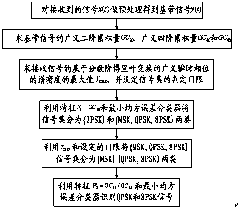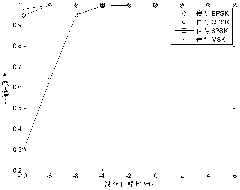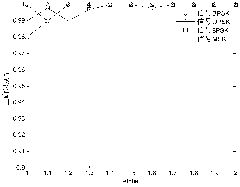Method for recognizing digital modulation signals under Alpha stable distribution noise
A digitally modulated signal and stable distribution technology, applied in the field of communication, can solve the problems of unsatisfactory recognition performance and poor QPSK recognition performance
- Summary
- Abstract
- Description
- Claims
- Application Information
AI Technical Summary
Problems solved by technology
Method used
Image
Examples
Embodiment Construction
[0071] Concrete implementation steps of the present invention are as follows:
[0072] Such as figure 1 Shown, the present invention is a kind of method for identifying the digital modulation signal under the Alpha stable distribution noise, and described method comprises the following steps:
[0073] S1 preprocesses the received signal x(t) to obtain the baseband signal y(t);
[0074] S2 finds the generalized second-order cumulant GC of the baseband signal y(t) 20 , generalized fourth-order cumulant GC 40 and GC 42 ;
[0075] It should be noted that the generalized second-order cumulant GC of the baseband signal 20 The value of is as follows:
[0076] The signal includes BPSK signal, QPSK signal, 8PSK signal and MSK signal, wherein,
[0077] The expression of the generalized second-order cumulant value of BPSK signal, QPSK signal, 8PSK signal and MSK signal is:
[0078] GC 20 =E[f(y(t)) 2 ]
[0079] GC 21 =Ε[|f(y(t))| 2 ]
[0080] Wherein, Ε is expecting, for MS...
PUM
 Login to View More
Login to View More Abstract
Description
Claims
Application Information
 Login to View More
Login to View More - R&D
- Intellectual Property
- Life Sciences
- Materials
- Tech Scout
- Unparalleled Data Quality
- Higher Quality Content
- 60% Fewer Hallucinations
Browse by: Latest US Patents, China's latest patents, Technical Efficacy Thesaurus, Application Domain, Technology Topic, Popular Technical Reports.
© 2025 PatSnap. All rights reserved.Legal|Privacy policy|Modern Slavery Act Transparency Statement|Sitemap|About US| Contact US: help@patsnap.com



